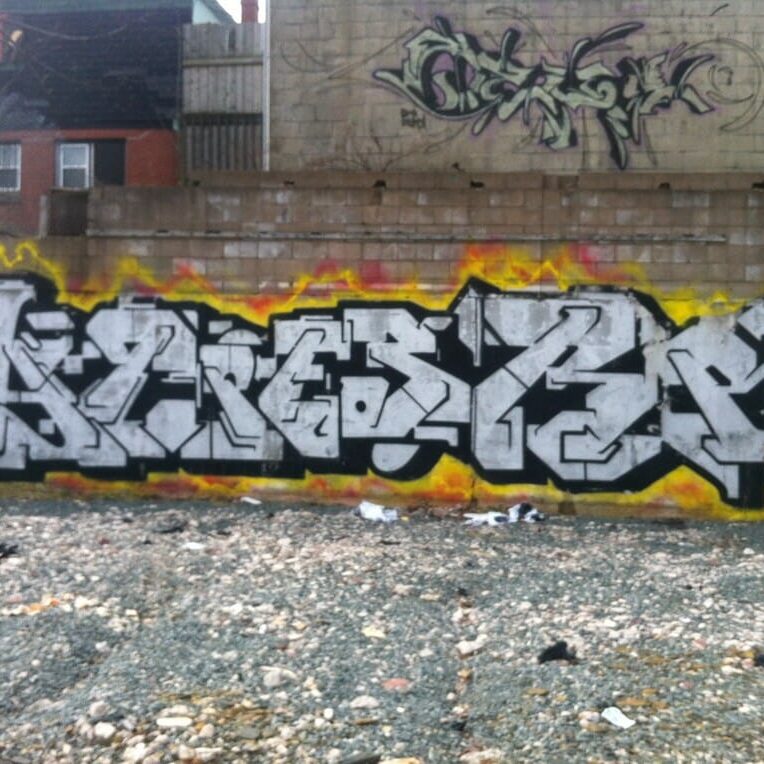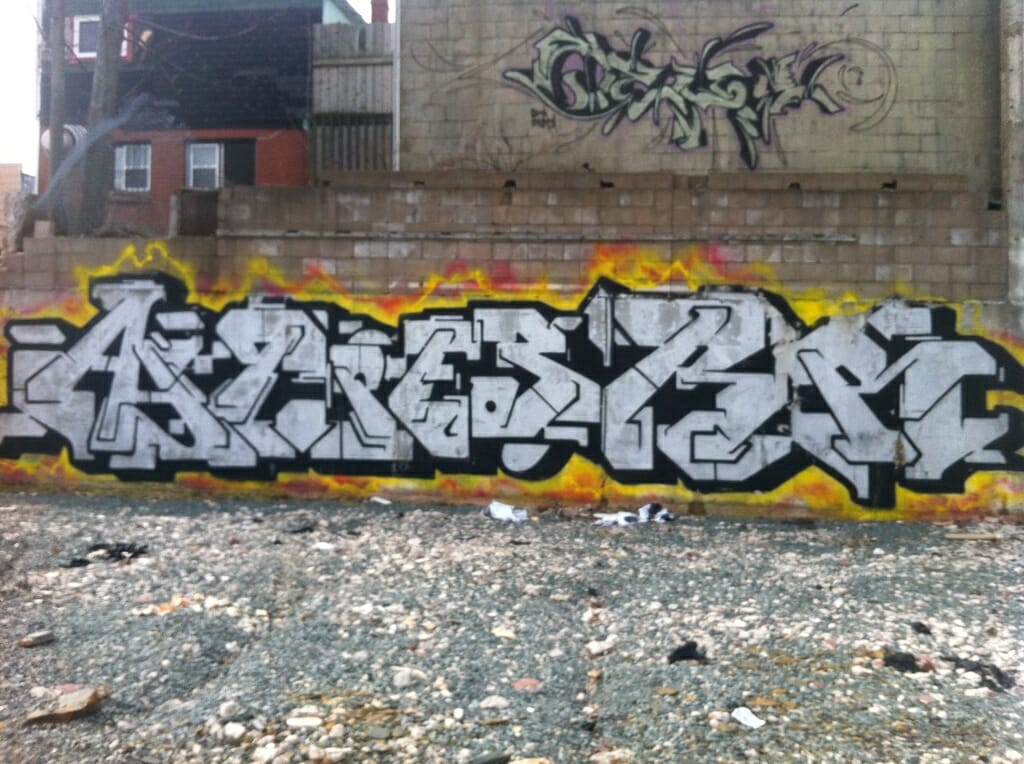
Free graffiti walls are rare in some parts of the world and encouraged in others. Maintained by the artists, new graffiti murals go up every so often over (and sometimes incorporating) old pieces of work. They require little maintenance and are often monitored by a community of artists rather than the police. Establishing a free wall in an effort to decrease tagging encourages graffiti as art rather than just vandalism.
Halifax, believe it or not, used to have two free walls: one in Halifax on Lower Water Street and another in Dartmouth, on the back of a Yacht Smiths International building that spans about one hundred feet. The wall on Lower Water isn’t a free wall anymore, but Yacht Smiths is still a place for artists to go and spray some art on a building.
The animosity that graffiti creates is crazy to me. According to Halifax Council, unless you’re a local legend turned international icon (Banksy, I’m talking about you), you’re a vandal with no taste and wasted talent. Halifax’s opinion on graffiti is not unique, promoting the benefits of artistic expression while denouncing uncontrolled expressions on public or private property. Addressing all graffiti as vandalism is ignorant and is the result of limiting options for graffiti artists in this municipality.
“The difference between art and graffiti is that art is done on property with the permission of the property owner. Art is a creative and productive form of expression. Graffiti is a crime,” reads the HRM website.
Graffiti has the potential to be just as amazing as other mediums, if not more. The pieces can take up an entire building side and last for decades, transforming with the landscape into something more. Few other styles offer that potential for evolution.
The HRM website has a dedicated section to graffiti and on its mural walls section states: “One of the best ways to deter vandals from applying graffiti is to strategically place murals in areas that will beautify a community. Most of the time a mural will not be touched by graffiti vandals.”
Murals and community projects are one thing, trying to make a city-scape artistic and creative, but free walls are a better answer to ending vandalism while promoting art. Some people believe that graffiti automatically lowers property values and encourages neighborhood crime; done wrong, I agree. But even Banksy started somewhere.
One of my favorite pieces of local graffiti, growing up in a smaller city than Halifax, was between a bookstore and a parking lot, where everyone driving or walking by could see it. It said, “public property is mine too” in sloppy red paint. There were no pictures or fancy fonts, but there was a message—and that’s what good graffiti is. As a form of art, it provokes thought and demands attention. The legality of it is often questioned and I agree with the complaint against work meant to vandalize. But I would rather see that “public property is mine too” a thousand times over a blank white wall than a canvas gone to waste.







